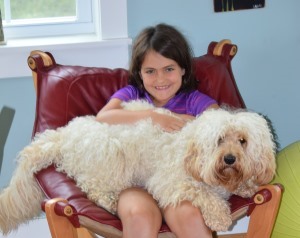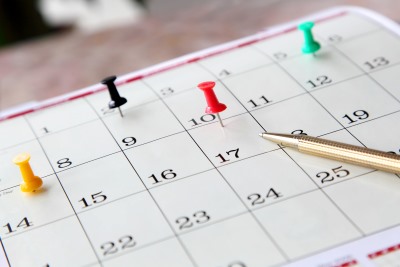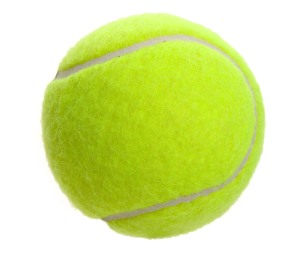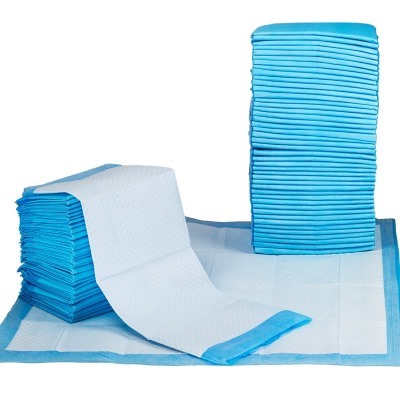Potty Training Your Labradoodle
Right now you’re probably congratulating yourself on the newest addition to your family: your Labradoodle pup.
That was a smart move on your part, because the Doodle is more than just adorably cute; you have a loving and highly intelligent dog who is eager to please and is curious about his or her new environment.
What your puppy discovers is up to you, because your Labradoodle will learn whatever you teach it. Those lessons begin the moment it arrives in your home.
Put yourself in the place of your puppy. You’ve just left the only environment you’ve ever known. The place you’re coming from gave you all you needed: shelter, food, playmates, and comfort. You didn’t even have to worry about relieving yourself!
Now you’re in a new environment, and you’re anxious to know if your needs will be met? What will the new “pack” be like? Being anxious makes you nervous, and being nervous makes you . . . have to go. But where? And does it matter?

What's in it for You - and Your Doodle?
As it turns out, most dog owners say it does matter, a lot.
The Labradoodle is a family dog, and as such, needs to live with its family, indoors. That means having a dog that has indoor manners and habits. The Labradoodle has to learn when and where it can go potty.
If you want a house with few “presents” and no surprises, you’ll have to start house breaking your doodle immediately.
Postponing potty training your Labradoodle will make the process much harder, and it will take longer if you wait to begin instructing your puppy on your expectations.
That’s because if your pup gets the chance to soil the floor or carpet, the proteins in the urine and feces will penetrate surfaces. Left untouched, they serve as beacons, or direction finders, to remind your dog to go in this location. Even if you clean it up, you might not be able to remove the scent that draws your pup back to the X that marks the spot. (enzymatic cleaner works best!)
How Hard Can Potty Training a Labradoodle Be?
The answer to that question depends on you more than it does on your Labradoodle.
Puppies are all about sleeping, waking, eating, playing and pottying. They don’t know that there’s a time and place for each of these activities.
You are the one who determines the training schedule – and that it’s met. The most difficult part of the potty training process is being ever vigilant. You have to watch your Labradoodle constantly for signs that it needs to go potty.
Training yourself to supervise your doodle may be the hardest part of all, but if you know the signs to look for and you have a strategic plan, your Doodle will become a housebroken member of the family, and a pleasure to be around or leave at home without worry that your carpet and floors will become soiled.

How Long Does it Take to Housebreak a Labradoodle?
Training a Labradoodle puppy to use a designated spot to relieve itself is a matter of age and bladder control versus time.
Young puppies can’t hold it very long; they haven’t learned to control their tiny bladders.
Expecting a young pup to hold it for five or six hours sets him up for failure and up for disappointment, if not displeasure. Figure that your pup can hold its bladder and bowels one hour for each month of age, and then add one more hour.
A three-month old puppy, for example, should be able to wait to do its business for one to three hours, plus one, or four hours. That’s not always the case, however. Your puppy may be able to go longer or need to potty sooner.
You’ll both have to work up to those long stretches of time, and it will be four to six months before your Doodle can hold it for eight hours.
Rather than wait until the last minute, take your dog out at the three-hour mark. You’ll know when that is, because young dogs have to potty within 10-30 minutes of eating food. They also have to go outside when they become excited.
Top Tips From Trainers Who Know!
All training can be divided into one of two categories, regardless of the method used: ignoring or praising.
You either ignore your dog’s behavior of praise her for what she’s done. If your Labradoodle has an accident in the house, scoop up the mess and take it outside to the spot you want her to use.
Walk your Doodle to the spot, too, but don’t scold her. She doesn’t realize what she’s done is a problem, and she may not even be sure why you are so upset. After all, no one ever made a fuss about it until now.
You’ll have to go back and clean up the mess with an effective solution for removing urine and pheromones; there are several available at your local pet store. Dogs have an incredible sense of smell, and the spot in the house they used once will lure them again and again to do their business unless you remove all evidence of the act.

On the other hand, praise your pup for pottying in the location you designated. You can give small treats as rewards. Known as NILIF, Nothing In Life Is Free, this method teaches dogs that every action will be ignored or rewarded. Because they are pack animals, your Labradoodle doesn’t want to be ignored. Offer tons of praise and a treat, and after 30 days, wean your pup off the treats. The praise will mean much more to your dog.
So which method is best? The one that works. Trainers and owners who have been there and done that suggest these techniques:
Gates and Crates
The good news is that your Labradoodle probably saw its mother relieve herself outdoors, and the puppy will understand that that’s what she is supposed to do. Also, mom cleaned the puppies’ den any time they soiled it; your puppy lived in a clean environment. Puppies know poop doesn’t belong in the house, or even in their crate.
That’s why so many pet parents rely on crate-training to potty train their Labradoodle. The crate recreates the den your puppy grew up in, and no dog wants to soil its own house if it can be helped.
A crate also confines your Doodle to a much smaller area, reducing the likelihood that you’ll stumble on a surprise later. As a benefit, the crate also provides a safe break from all the action in the rest of the house, and sometimes your puppy will choose to hang out in the crate.
Baby gates work the same way a crate works. Select a room with a floor that can be easily cleaned – preferably a room that allows your Labradoodle to still see, hear, and smell what’s going on. Cordon off the entry/exit to the area with a baby gate.
With both crates and gates, you can more easily monitor your puppy’s behavior. When the time limit (one hour for one month + one) is up, take your pup outside to do its business. Because not all puppies will be able to wait, watch for the signs; speed is of the essence here, or you’ll be cleaning up a mess:
- Whining
- Walking in circles
- Sniffing
- Heading to a corner
- Barking (older pups)
By the time your pup squats, it’s too late.
You don’t always have to wait for a sign. Puppies have to relieve themselves upon waking, after a meal, and following playtime.
Signs to Watch For
Ring My Bell
People who come to your door ring the bell to get your attention. Your Labradoodle is smart enough to do the same thing.
Hang a bell on the inside doorknob of the door your dog will use to go outside. Every time you open the door, ring the bell. Show him he can do it, too. When your puppy rings the bell with his nose, praise him profusely. He will quickly come to associate the ringing bell with the open door and his need to relieve himself.
He may test you to see if the ringing bell really will open the door. Even if your Labradoodle just went outside 15 minutes ago, if he rings the bell, open the door. The game will quickly wear off, just like it does with children, and he’ll only ring the bell when he needs to go.
Make a Run For It
When you take your Doodle outside, walk her to the spot you have designated as the place to go. Carrying her defeats the purpose. Your are teaching her to be a big girl and do this on her own, and she needs the visual and olfactory stimulation to remember where her spot is.
Give the command, “Go potty,” or whatever phrase you decide on. Some owners use, “hurry up” or “look sharp,” rather than the default phrase most people use.
Regardless of what words you use, be consistent and say them every time. Your dog will come to associate what she hears with relieving herself.
You may be tempted to streamline the process of potty training your Labradoodle, by installing a doggy door and being done with the whole business. After all, the door will free up your time and allow the dog to take care of her own needs.
The problem with the doggy door as a house-breaking tool at this early age is similar to asking young children to perform a task. They are easily distracted and forget what they are supposed to be doing. Your Doodle may come right back in the house, having forgotten the reason for going outside in the first place.
Avoid using doggy doors until the process is perfected.
Pee Pads and Potty Training
Some owners, especially if they live in apartments or are older, find it nearly impossible to respond quickly or frequently enough to meet a puppy’s elimination needs. Pee pads to the rescue!
You can teach your puppy to use these pads (or artificial turf) in place of going outside. Follow the same steps in teaching your dog to use these, just like you would if you were taking him outside.
Knowing that your Labradoodle can relieve itself on pee pads during the day can be a welcome relief, quite literally. You dog can prove that she can be trusted while you’re away from the house.

Get There Quicker
Sometimes, you’ll want to try a combination of training techniques to get faster results. If your puppy will have free time in the house, attach a six-foot lead to its collar and fasten the other end to yourself. That way, the dog will always be in your sight should it show signs of wanting to go potty.
Another helpful strategy includes taking up all food and water two hours before bedtime. Be sure that when you get up the next morning, you attend to your Labradoodle’s first.
Just When Things Were Going Well
Accidents are going to happen.
Both you and your puppy will lose track of time, or something will disagree with her tummy. Remember that your Labradoodle wants more than anything in the world to make you happy.
When an accident does happen, check your anger. Doodles respond to leaders who are confident and know what to do. Yelling at your dog will make it seem like you’ve lost control.
If you catch your puppy in the act, say no in firm voice and matter-of-factly you’re your dog outside.
Avoid scolding the dog. Scoop the poop or dab up the urine with a paper towel and take it outside to The Spot (or to the pad). Show your dog that’s where urine and feces goes.
What if Nothing Seems to Be Working?
There could be a medical condition preventing your pup from successfully mastering her potty training.
Like humans, dogs can get bladder and urinary tract infections that will have them tinkling every few minutes. Kidney problems and orthopedic problems, although rare in puppies, can slow down any house-breaking training.
If nothing seems to work, contact your vet. Seek other Labradoodle owners to see if they have had any similar experiences with their dogs.
Summary
Although it may feel that way, the potty-training stage for your Labradoodle won’t last forever. Within six months, your Labradoodle should be able to wait at least eight hours before going outside to take care of business, and you’ll be able to get back to yours.
Wasn’t that the ringing of the bell on your door?